A short call is a straightforward options strategy that can be used when you think a stock’s price will go down. It’s important to know that this strategy comes with some risks and limits on potential profits.
| When and How to Use the Short Call Options Strategy |
|---|
| 1. Negative Market View |
| Consider a short call when you have a pessimistic outlook on a stock or asset. It’s ideal for profiting when you expect the price to go down. |
| 2. Capitalize on Price Drops |
| Short calls are your tool of choice when anticipating a decline in the stock’s value. Use them to benefit from falling prices. |
| 3. Option Selling Advantage |
| As an option seller, you receive a premium upfront when you enter a short call position. This premium becomes your potential profit. |
| 4. Simplified Strategy |
| Short calls are a straightforward single-leg strategy, making them accessible even to beginners. |
| 5. Profit with a Limit |
| While there’s a defined maximum profit with short calls, they still offer attractive profit potential, especially when executed in the right market conditions. |
| 6. Embrace Risk Uncertainty |
| Short calls don’t come with a set maximum loss, which can be an advantage if used cautiously. However, risk management is crucial. |
| 7. No Set Limit on Losses |
| Be aware that the risk is undefined, and losses can accumulate if the market moves against your position. |
| 8. Flourish in Low Volatility |
| Short calls thrive when volatility decreases, providing traders with opportunities in calmer markets. |
| 9. Time Is on Your Side |
| Short calls benefit from the passage of time. The closer you get to option expiration, the more time decay works in your favor, potentially increasing profits. |
| 10. Consider Your Market Conditions |
| Assess the current market environment, your risk tolerance, and your outlook before deploying a short call strategy. Proper timing and analysis are key to success. |
What you'll learn:
➤ What is the short call options strategy?
A short call is a bearish options strategy where you sell a call option. Unlike buying stocks, this strategy has no defined limit on how much you can lose, and your profit potential is limited.
You make money with a short call if the stock’s price is lower than the strike price when the option expires.
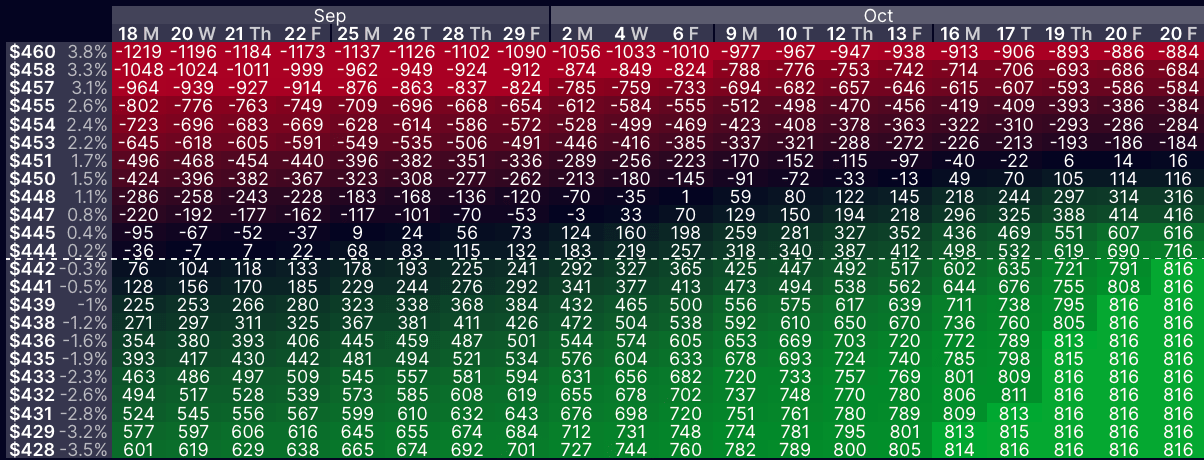
How does the short call options strategy work?
Selling a call option is a bit like betting against a stock. If you think a stock’s price will drop, you can use this strategy instead of short selling the stock directly.
However, it’s important to note that selling options can be riskier because it doesn’t come with built-in protections if the stock price moves against you.
Each short call contract is essentially like selling 100 shares of stock. But be cautious, because when you sell naked call options, you might need to set aside some money (margin) to cover any big price increases in the underlying asset.
When should I use the short call options strategy?
People use a short call when they believe the price of the underlying asset will be lower than the strike price by the option’s expiration date.
Additionally, they might expect that the implied volatility (how much the price swings) will decrease. The closer the strike price is to the current stock price, the more money you can get upfront for selling the call option.
If you’re looking to sell the underlying stock, selling a call option can be a way to reduce your costs. This is because you collect a premium (money upfront) for selling the call, which can offset some of the expenses if the option is eventually exercised.
➤ How to set up a short call
To start a short call position, you need to write (sell) a call option contract. These options are listed in something called an options chain, where you can find all the details you need, like strike prices and expiration dates.
The money you receive when you enter the trade is called the premium. People in the market look at several factors, such as the strike price compared to the stock price, how much time is left until the option expires, and how volatile the stock is, to decide if the premium is worth it.
Short call payoff diagram
The short call payoff diagram helps us understand the risks of selling naked call options. When you sell a call option, your profit is limited to the credit you receive upfront. However, your risk is unlimited if the stock’s price goes up.
For example, if you sell a short call option with a strike price of $100 for $5.00, your maximum profit is $500 (the $5.00 premium multiplied by 100 shares). But if the stock’s price rises above the break-even point, which is the strike price plus the premium, in this case, $105, you could face unlimited losses.
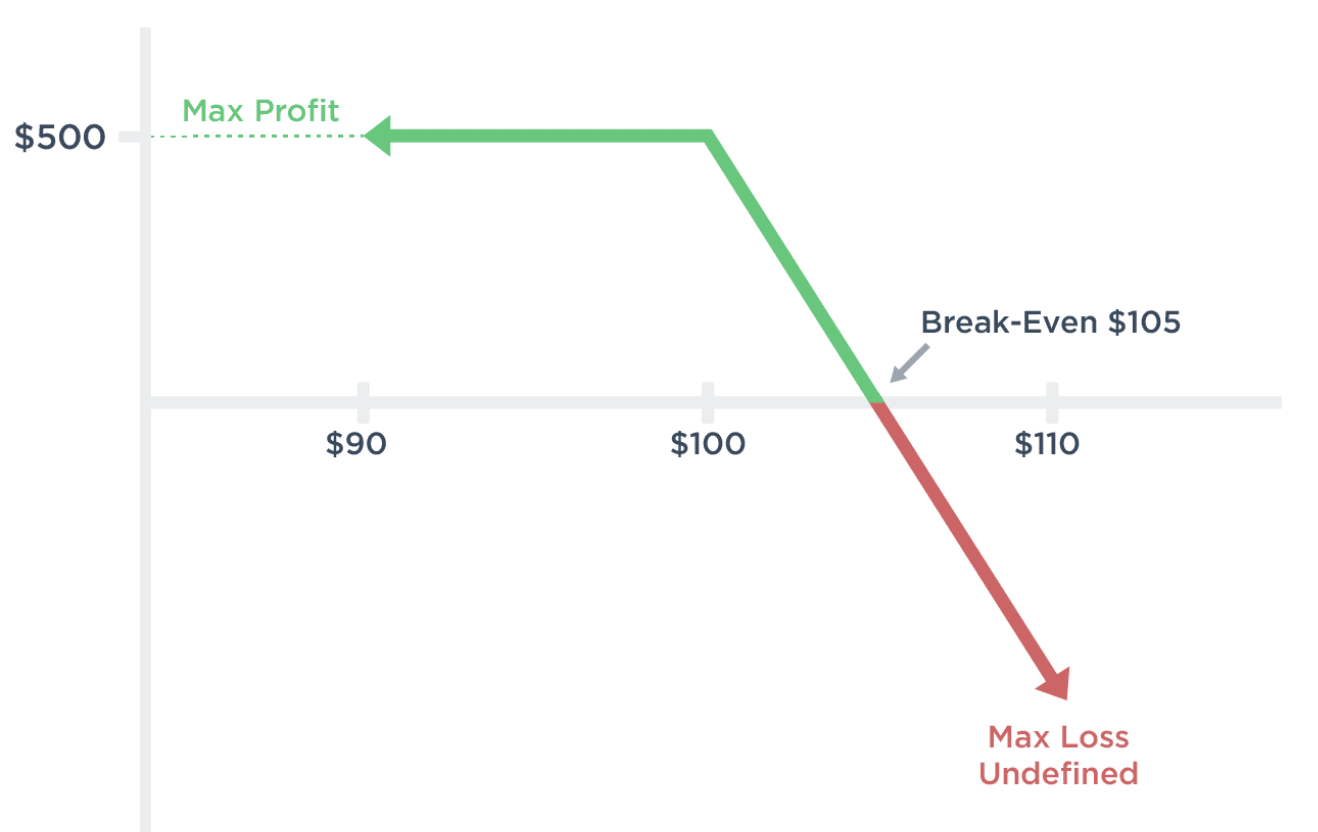
How to enter a short call
To enter a short call position, you need to place a “sell-to-open” (STO) order with your broker. This order can be filled at the market price or at a specific price you set (limit order). Once you’ve sold the call option, the cash from the premium is added to your trading account.
It’s essential to know that because selling call options involves significant risk, your broker may require you to maintain a margin in your account to cover potential losses.
The specific margin amount depends on factors like your broker’s policies, the stock’s price, and market volatility. This margin requirement can change as market conditions fluctuate.
How to exit a short call
There are several ways to exit a short call position. You can do this at any time before the option’s expiration date by placing a “buy-to-close” (BTC) order. This order allows you to repurchase the option contract at the current market price or at a price you specify.
The premium paid for buying back the option is deducted from your account. If you pay more for it than you received initially, you’ll realize a loss, and if you pay less, you’ll make a profit.
If the person who bought the long call option decides to exercise it, you, as the short call seller, are obligated to sell 100 shares of the stock at the strike price.
However, if the short call option expires out-of-the-money (OTM) because the stock price is below the strike price, the contract becomes worthless, and you keep the entire premium you initially received.
➤ Time decay and implied volatility
Two factors significantly affect the price of options: time remaining until expiration and implied volatility. As time passes, options lose value, which is known as time decay (theta).
Options with more time until expiration are generally more expensive because there’s more time for the stock price to change. As the expiration date approaches, the option’s price decreases. This is beneficial for call option sellers because they profit from time decay.
Implied volatility also plays a role. When the market expects more significant price swings (higher implied volatility), option prices increase. Conversely, when implied volatility decreases, option prices drop.
This means that call option sellers benefit when implied volatility goes down before the option’s expiration date.
Understanding these factors is essential for anyone considering a short call strategy, as they directly impact the potential gains and losses associated with this options trading approach.
➤ How to adjust short call options
You can manage your short call positions during a trade to minimize risk. One way to do this is by adjusting your single-leg short call option.
If you find your position under pressure, consider buying a call option with a higher strike price. This turns your short call into a bear call credit spread. While the long option defines your risk, it also reduces your profit potential to the difference between the spread width and the credit received.
For instance, if you sold a $100 call option and then bought a $110 call option for $2.00, your maximum profit potential becomes $3.00. However, your maximum risk is now limited to $700 if the underlying asset goes above $110 at expiration.
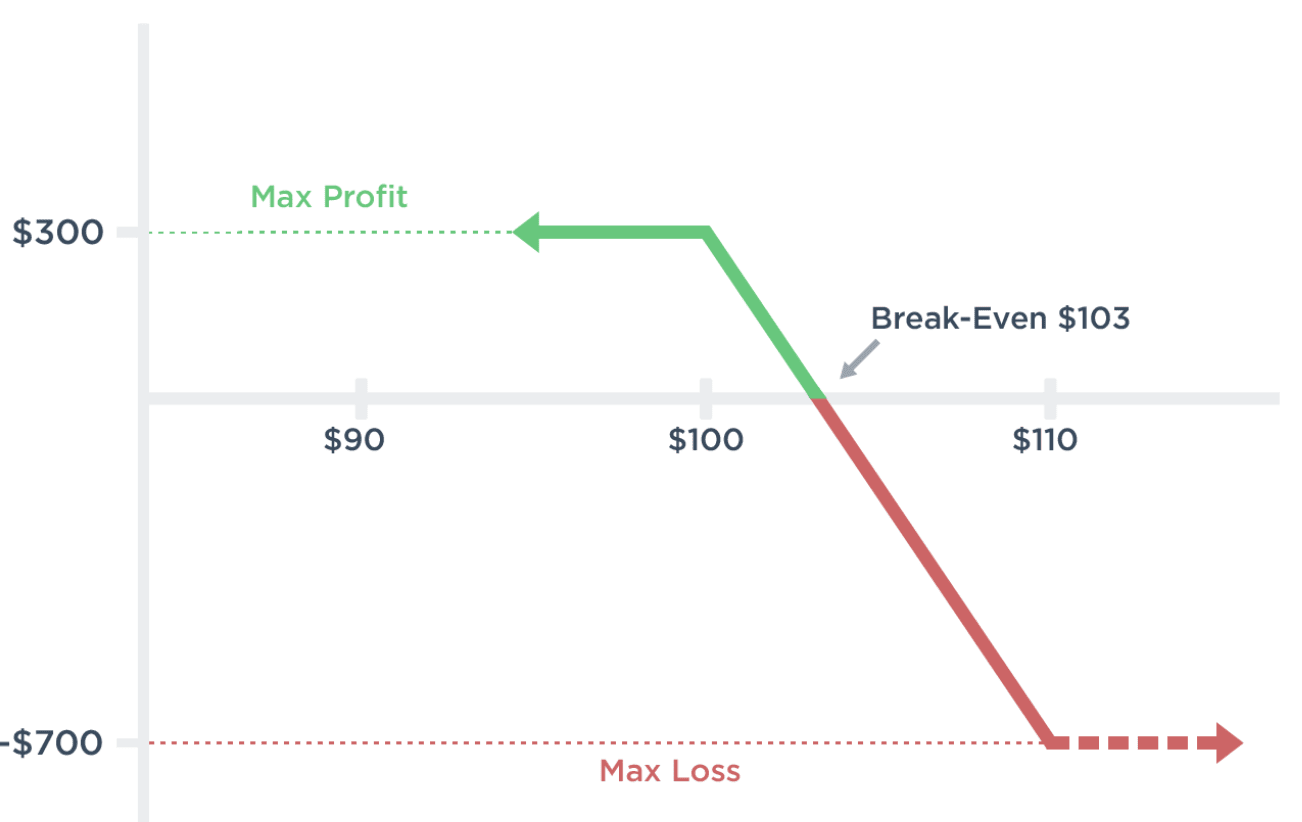
➤ How to roll short calls
If you want to extend your trade, you can roll your short call option to a future expiration date. This involves buying-to-close (BTC) the existing short call and selling-to-open (STO) a new call option with the same strike price but for a later date.
This rolling action should generate additional credit, which widens your break-even price and increases your profit potential compared to the original position. However, your risk remains undefined.
For example, if you have a short call with a $100 strike price expiring in May, you could close that position and reopen it with a June expiration date. If this adjustment nets you $2.00 in premium, your break-even point extends to $107.
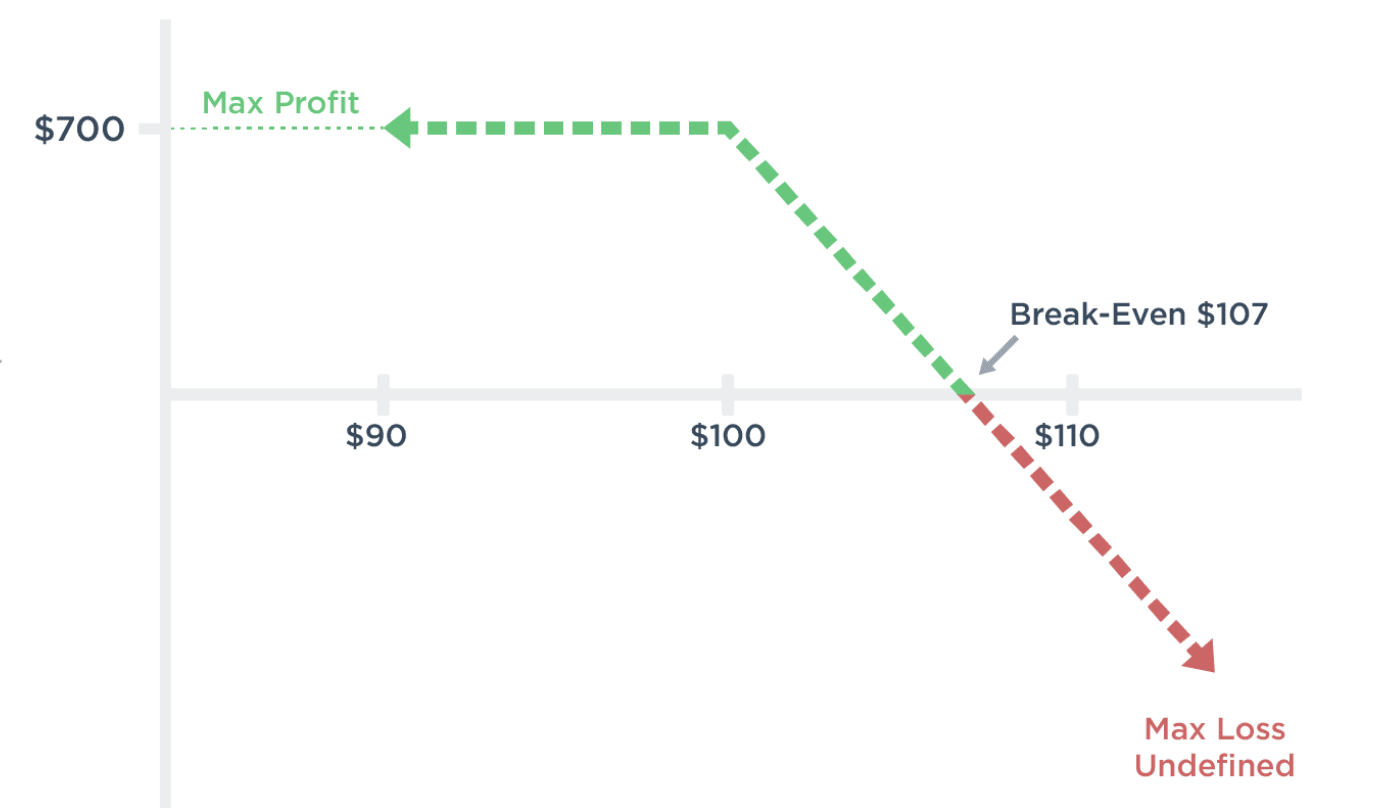
➤ How to hedge short calls
To hedge your short call, you might choose to sell a put with the same strike price and expiration date, creating what’s called a short straddle.
This adds more credit and extends the break-even price both above and below the strike price of the short straddle by the amount of premium collected. While this increases the premium received, keep in mind that the risk remains undefined and could be substantial.
For instance, if you’re facing a challenge, you could sell a put with a $100 strike price. If you collect an additional $5.00 in credit, your maximum profit would increase to $1,000, and the break-even price would shift up to $110.
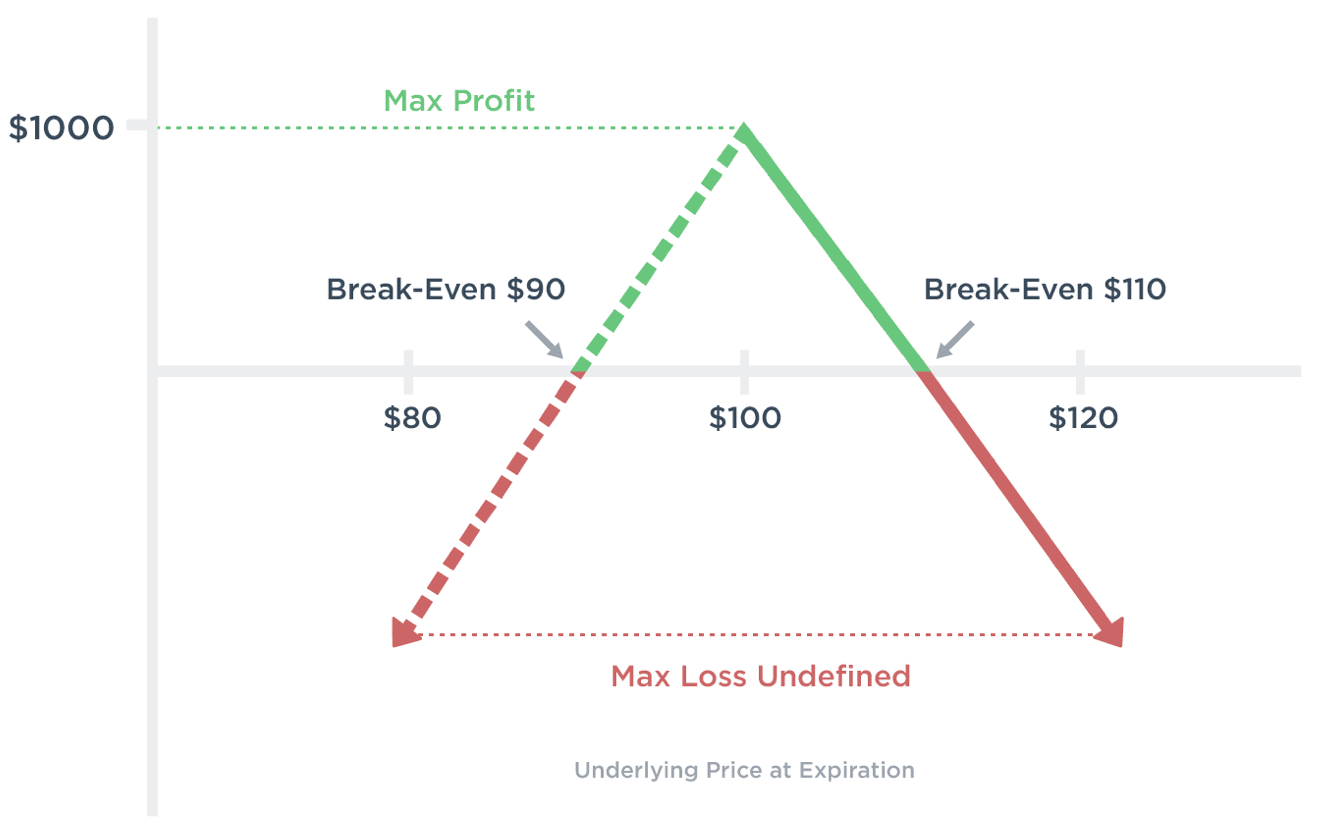
➤ What is a synthetic short call?
A synthetic short call involves combining short stock with a short put option at the same strike price as the original short stock position.
This creates a synthetic short call, as the payoff diagram resembles that of a single short call option. Like with a naked short call, the expectation here is that the underlying price will decrease before expiration.
Selling the put option generates a premium, but the risk remains unlimited if the stock continues to rise beyond the premium received.
The maximum profit potential is limited to the premium collected for the short put. If the stock closes below the strike price at expiration, the short stock position will be covered when the short put is exercised, offsetting the shares.
➤ Short Call Options Strategy FAQ
What is a short call option? A short call option is a bearish strategy where you sell a call option contract. This strategy is used when you anticipate that the price of the underlying stock will fall or when you expect a decrease in volatility.
How does a short call option work? When you sell a call option, you are essentially agreeing to sell the underlying stock at the option’s strike price if the buyer decides to exercise the option. This means that if the stock price goes up and the call option is exercised, you’ll need to sell the stock at a potentially lower price, resulting in a loss.
Are call options bullish or bearish? Short call options are bearish. They profit when the underlying stock price is below the strike price at expiration. In contrast, long call options are bullish, as they make a profit when the stock price rises above the strike price.
Can I close a call option before expiration? Yes, you can close a call option before its expiration date. If you’ve sold a short call option, you can buy it back in the market to exit the trade. This allows you to manage your position and potential losses or profits.
Short or long put options? Short call options and long put options are both bearish strategies, but they have different risk and reward profiles. Long put options have defined risk and unlimited profit potential, making them suitable when you expect increased volatility.
Short call options have unlimited risk, limited profit potential, and work best when you anticipate a decrease in volatility. The choice depends on your market outlook and risk tolerance.



